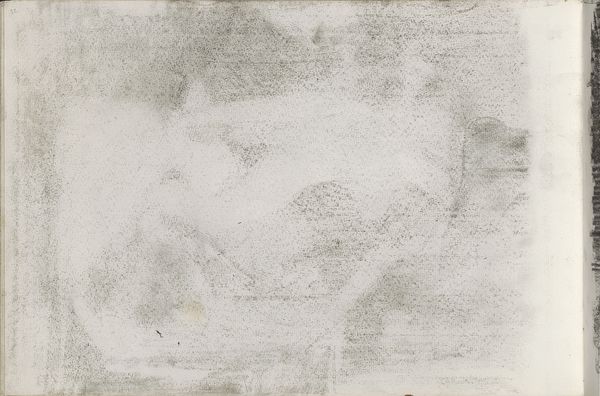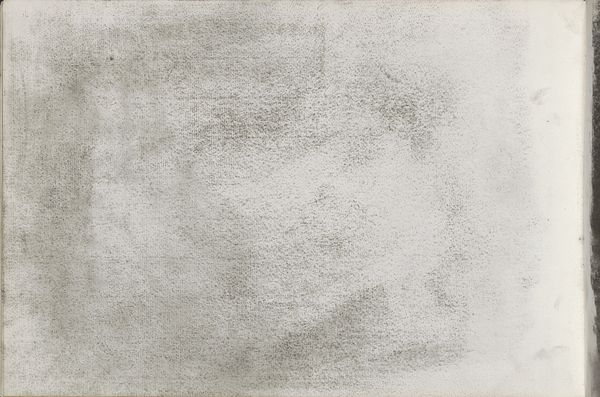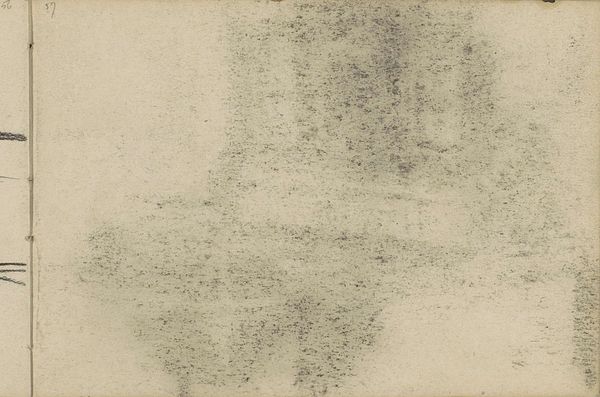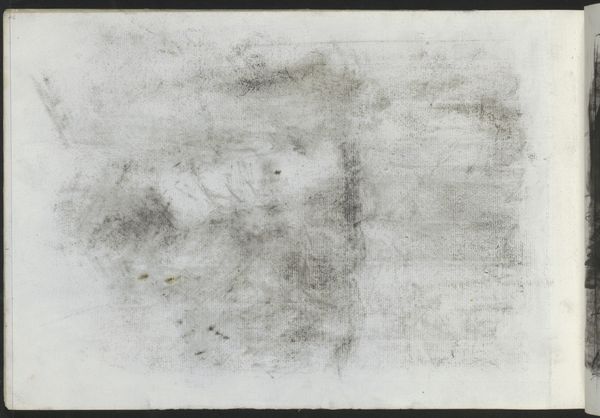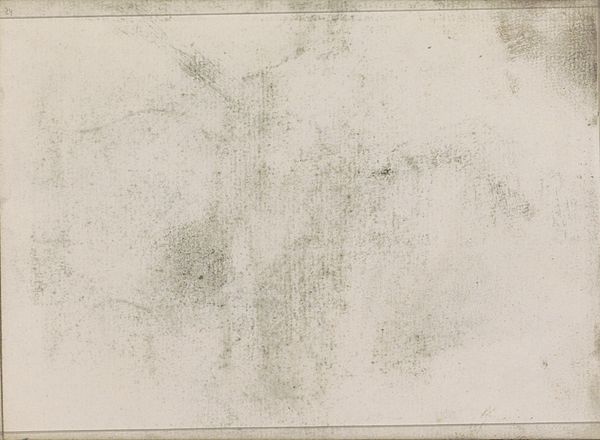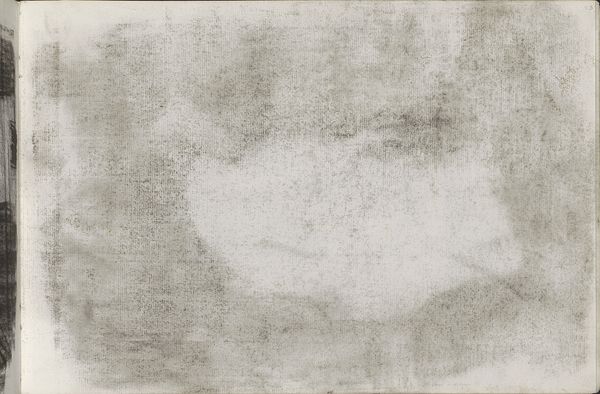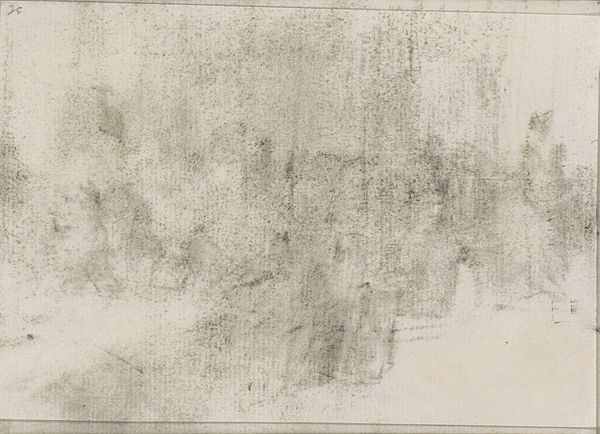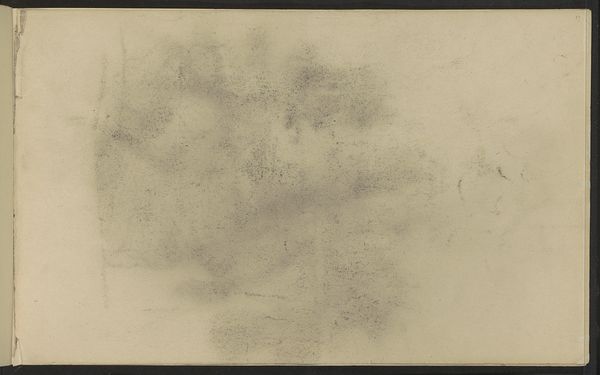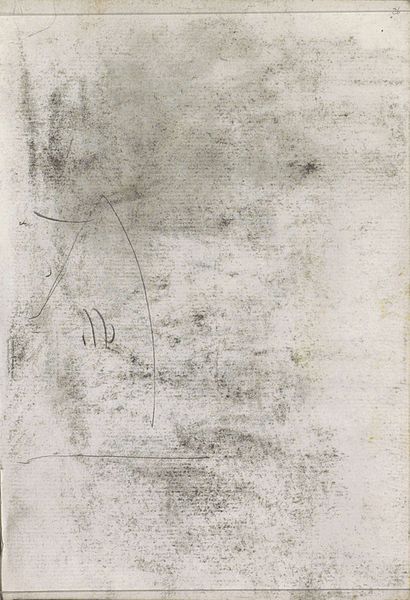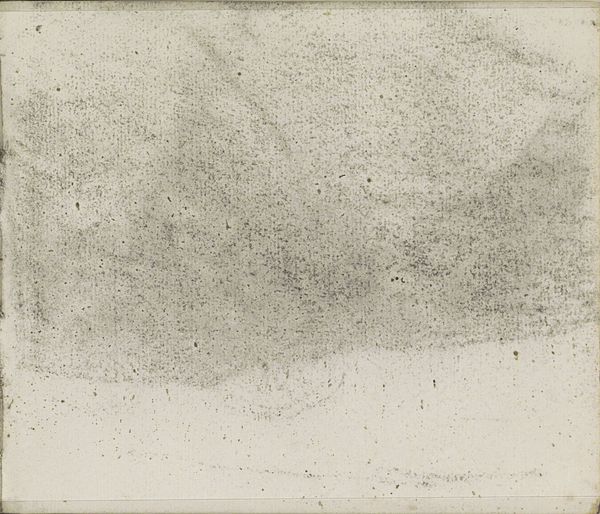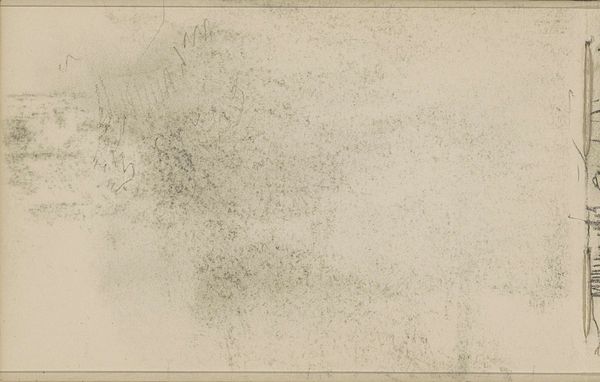
drawing, monotype, print, paper, ink
#
drawing
#
monotype
# print
#
impressionism
#
paper
#
ink
#
watercolor
Copyright: Rijks Museum: Open Domain
Curator: Standing before us is a piece by Willem Witsen, titled "Abklatsch van de krijttekening op pagina 29," dating back to somewhere between 1887 and 1892. It's a striking example of impressionistic printmaking. Editor: You know, when I first glanced at this, I thought someone had spilled their coffee—or maybe a particularly expressive storm cloud left its mark! It's moody. Curator: That "moodiness," I think, arises from its unusual technique. Witsen used a monotype process, which means this is essentially a unique print, a direct transfer of a chalk drawing. Think of it as a ghostly impression, deliberately blurring the line between drawing and print. Editor: Ghostly is right! It’s the art of almost-there, like a half-remembered dream fading as soon as you try to grasp it. What's the context of Witsen and impressionism's influence? Curator: Witsen moved in a circle of Dutch artists deeply influenced by French Impressionism, but he adapted it to distinctly Dutch subjects, particularly atmospheric landscapes and cityscapes. What’s so fascinating about this work is how it hints at form without fully revealing it. It resists easy legibility. In his era the art market expanded; these "minor" genres and reproductive techniques had greater significance for distribution to wider audiences. Editor: Absolutely, there’s this pull between visibility and erasure. The use of paper and ink is perfect—this ephemeral combination for an ephemeral effect, all about subtlety, almost as if the medium itself wants to disappear! Curator: It also underscores a key shift in late 19th-century art: the emphasis on the artist's hand and subjective experience, made more broadly accessible and viewed outside established exhibitions. "Finish" and precision were less prized than capturing a fleeting moment, a sensory impression. Editor: Which maybe means its beauty is not in the details, but in the feeling. It’s not supposed to be perfect, complete. It invites the viewer to meet the artwork halfway and fill in the blanks with their own story. What a wonderfully imperfect and inviting art experience to view today. Curator: Precisely. A meditation on impermanence, offered through a deliberately transient medium. And from an historical angle, it suggests the important democratizing forces shaping art during that era.
Comments
No comments
Be the first to comment and join the conversation on the ultimate creative platform.
